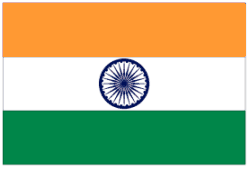
India’s presence in Afghanistan incites violence by Taliban
Report from Indian Correspondent, Deepali Gaur
Reading time: (Number of words: )
Even as the Indian and Afghan defence ministers met in early April it was a meeting soon to be overshadowed by the death of two Indian construction workers of the Border Roads Organisation (BRO) in a suicide attack by the Taliban on their convoy in Nimroz province of south-western Afghanistan.
Amidst the continuing violence in the country - the mounting kidnappings which were followed by a higher number of suicide attacks - India so far had been a little removed from the volatile situation in the country, which has more to do with its conservative presence there since most engagements have been at the diplomatic level. Indians, mostly associated with BRO work, have lost their lives in the past few years beginning with a telecommunication engineer in 2006 believed to be a hostage situation gone wrong.
But suicide attacks do not come with such issues. This time the target was clear and the casualties irrelevant. The Indian BRO was engaged in the building of the strategic Zaranj-Delaram road that will connect the landlocked country to Iran and its seaports. This road is crucial to the trade in Afghanistan as it opens up routes for Indian trade in the region. These latest casualties for the BRO came in the final stages of road construction.

Abdul Rahim Wardak, the Afghan Minister of National Defence met his Indian counterpart A.K. Antony to discuss ways to strengthen bilateral ties between the two countries who have shared close historical, cultural and trade ties. These ties have frayed in recent decades, due to respective geopolitics, the Taliban’s Islamic propaganda and other political factors.
More recently, India has been expressing concerns over the threat faced by Indian workers engaged in rehabilitation in Afghanistan. Despite the latest tragedy the government has said it would continue to help the reconstruction process, by ensuring the security of the Indians.
In the past a small contingent of Indian army doctors and male nurses are believed to have participated in humanitarian efforts by treating Northern Alliance troops at a hospital at Farkhor, close to the Afghan-Tajik border – a contingent believed to have been financed from Delhi.
The country’s involvement in rehabilitation and reconstruction efforts in Afghanistan totals nearly $700 million for as many as 60 projects ranging from infrastructure to the social sector. The commitment supports a return to stable conditions with accompanying economic progress, critical for sustainable growth and stability.
With common perceived threats, India’s cooperation is sought even more on the issues of terrorism and extremism. The Indian government has reiterated support for rebuilding Afghanistan through reconstruction, rehabilitation and infrastructure, but there would be no military involvement. Ironically, the Afghan National Army was the first to receive Indian help.
It is against this background that the visiting Afghan contingent’s request for India’s help in training its troops to fight insurgents becomes significant. While New Delhi has ruled out direct involvement of its forces in Afghanistan, the government will consider training Afghan military personnel at Indian institutes.

The Indian government already burnt its fingers with the Taliban in 2000 with the Kandahar debacle – an incident that continues to haunt the political party in power then. This was the hijacking of an Indian Airlines flight from Nepal and the subsequent swap of dreaded militants, amongst them Maulana Masood Azhar - the man who went on to raise the Jaish-e-Mohammed, for the release of the passengers at Kandahar airport. The airliner was surrounded by the Taliban militia in their now famous SUVs wielding their sophisticated weapons, ostensibly providing cover for the hostages. In reality it was a blatant show of strength to the Indian government. Clearly, Indian foreign policy experts are bound to suffer bouts of insomnia if the Taliban do move in to political power in the country.
The foreign troop presence in the country today is much higher than it was when the Taliban militia was being routed out in 2001. The fresh incidents come at a time when the United States are themselves sending an extra 3,500 Marines while simultaneously urging allies to redouble efforts in the face of rising violence. And even as the government was coming to terms with the recent violence there has been news of the kidnapping of yet another Indian road worker in Herat.

Reconstruction work in Afghanistan continues to come with the price of having to grapple with security in the country and Indian authorities are only struggling to reconcile this in the face of their commitments to their regional neighbour.










